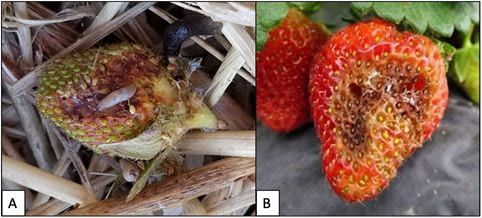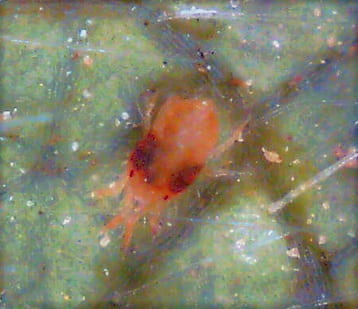By Sankara Ganesh, Maria Cramer, and Kelly Hamby.
Department of Entomology, University of Maryland, College Park
The cool, wet spring weather we have been experiencing favors slugs, so be on the lookout for slug damage. Slug damage may easily be confused for sap beetle feeding, but management of these pests is very different, so it is important to correctly identify the problem. Both pests can be common in matted row production.
Damage: Slug feeding renders fruit unmarketable and susceptible to infestation by other pests including sap beetles. Sap beetle adults are attracted to ripening, ripe, and overripe fruit and directly cause damage through feeding, but may also introduce pathogens and contaminate fruit with larvae. Sap beetles tend to leave behind circular holes while slug damage is often irregularly shaped, and both can cause moderate to deep holes. However, slugs will also feed on leaves and leave behind slime trails. Monitoring is important to conclusively determine which pest is causing damage.


